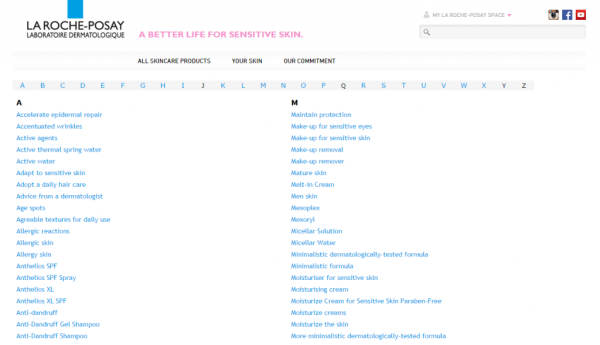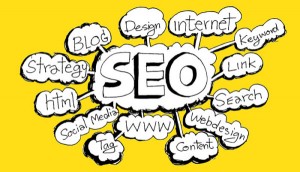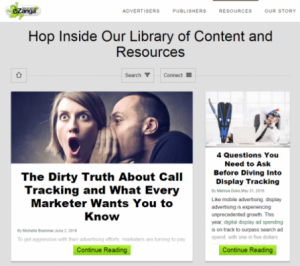Storytelling and marketing are closely interrelated. In other words, marketing has been drawing on storytelling in order to create lifestyles and identification-platforms, to cater to popular clishés and last but not least to evoke covetousness for a product or a brand.
Content Marketing is less focused on the product, respectively the business, services, etc. that it wants to advertise, but centers on informative content, which can provide help or assistance unrelated to an actual purchase of the product.
Both aspects – content marketing and storytelling – are almost indispensable for businesses that are committed to SEO and want to strengthen their inbound marketing results.
In this article covering the phenomenon of stories and marketing, I want to start out with a short theoretical introduction to the concept of storytelling, before moving on to practical aspects and tips with which websites can be optimized through narrative content.
The second half of the article will deal with four versions of exemplary storytelling and will furthermore illustrate the different kinds of positive effects that can be achieved by implementing stories into your online marketing strategy. The ultimate goal would be, of course, for the stories to go viral, to increase traffic, generate leads and indirectly advertise a brand.
After nourishment, shelter and companionship, stories are the thing we need most in the world. – Philip Pullman, British novelist
Theory: Why bother with storytelling online?
Storytelling methods and strategies are currently flooding the SEO and online marketing landscape. For instance, in 2012 Coca Cola released a so-called 2020 plan of liquid storytelling, including a two-part video explaining how the multi-billion dollar company wants to reach a “disproportinate share of popular culture” by using storytelling to create content that is in fact so viral and contagious that it can’t be controlled. It shouldn’t come as a surprise, that storytelling also constituted the focus of Content Marketing World 2011 in Cleveland, Ohio.
However, the question remains as to how justified the hype around storytelling really is. No doubt, storytelling and content marketing are time-consuming and require a lot of resources and know-how. It might be easier and faster to simply send out a handful of emails and to kindly ask for a link instead of writing relevant articles, how tos and interviews. But then again, you shouldn’t do email camapigns like that in the first place.
So why bother if you could just take the easy road?
The building of organic links and the improvement of SERPs represent one side of storytelling. On the other side, you’ll find the related area of lead generation. To turn a lead into a sale, you’ll need a high-quality lead that is actually interested in your product/brand, as opposed to those, who are merely vaguely attached to your industry. Great, “captivating” content can be a good way to attract precisely the right kind of leads, i.e. the ones that are here to stay and that will eventually bring in revenue.
At this point, online storytelling can be a forceful element. Stories are being told- both visually and verbally – with the help of narrative elements and actually offer either practical additional value or entertainment value, or both.
Valuable information and problem solutions get furnished with an arc of suspense, narrative forms (introduction, main part, conclusion), or the classic happy end. As a consequence, they invite the user to remain on the site, to stronger identify with the brand and to ideally become a customer.
Let’s get down to business: How to tell a proper story?
In order to make storytelling more than a pretty accessory, and in fact render it sucessful, i.e. make it raise awareness, generate leads and increase traffic, it has to be both thrilling and comprehensible. There is already a broad array of how-tos and storytelling guides out there. For instance, Susan Gunelius composed a helpful overview on how to do storytelling in marketing.
In general, you do not need a degree in literature in order to implement narratives for your online marketing strategy. As an SEO-manager, website operator or startup buisness man/woman, it is often enough to start with some basic questions.
The 5 most important questions:
- Who is my target audience?
- Which topics – despite my brand/product/sevice – are equally interesting for my audience?
- How can I best turn these topics into informative, helpful, or entertaining stories?
- How can I integrate my company philosophy and/or emotions into my content?
- What kind of “story” fits my business the best?
With these five questions, you have some basic parameters that will guide you while coming up with engaging articles, company-related how-tos, experience reports, and problem solutions.
The second step could be to either look for interesting interview partners (for example, as an SEO-agency, these could be the CEOs of your biggest clients), to enhance audiovisual storytelling, or to increase the interaction you already have with clients and potential customers via your social media channels and/or a company blog. In all these areas, there is great potential to implement storytelling techniques to make marketing more relatable, “natural” and engaging.
Eventually, storytelling is not just formally an ongoing process. While it is not necessary to flood your website with narratives and funny stories, it is rather important to come up with a general direction, a narrative form and a thematic field that fits your company and the audience you intend to reach. Obviously, stories that would appeal to the Red Bull target audience, wouldn’t necessarily appeal to the typical DOVE beauty product consumer. And as always: “quality before quantity” is never wrong to begin with.
One method – 4 creative storytelling techniques
Following the theoretical and practical introduction to my topic, I will move on to 4 successful storytelling examples in order to illustrate the different ways in which companies utilize the positive effects of narratives on their websites.
I will address the techniques that can be adopted by basically any business to optimize their content marketing strategy and will also pay special attention to one aspect at a time which has been most succesfully implemented by the company in the respective example.
Example 1: Storytelling and the nuclear family to transport the idea of “shared identity”
The US homepage of Coca Cola is currently relying quite heavily on the image of the nuclear family and family-related stories and memories to promote their beverage, as well as an idea of a “shared identity”.
In addition to a competition in which visitors can win a trip for their family by uploading a family picture, using the hashtag #MomentosCoke, the multi-billion dollar company specifically implements audiovisual storytelling to get their message of normative family values across.
The prominently embedded video (aptly called “Building”) features several animated characters, all inhabiting the same building. While the camera slowly moves up and shows the different apartments and their tenants, we get to see a meet cute on the street, a young couple moving in together, a young family and their toddler, a pair of proud parents and their son who is about to go to college, a middle aged couple dancing in their kitchen and finally an elderly couple celebrating their 50th anniversary.
The iconic coca cola bottle makes a minor appearance in all these scenes, but remains rather subtle – compared to the apparent focus of the video, which centers on the idea of a happy family life. Only at the end of the short video does the audience get to see the characteristic bottle and the logo “open hapiness” in the traditional red design, displayed as a neon sign on the roof of the building.
Coca Cola quite obviously channels the theme of a traditional, wholesome family through absolutely flawless audiovisual storytelling, complete even with its own background song. It is interetsing to note, however, that while the company chose to include a black family and a possibly interracial couple in their story, they (still?) shun the display of a gay/lesbian family within their storytelling.
Apart from of this lack in variety and representation, Coca Cola manages superbly to transport the desireable idea of a peaceful evening in a nice, middle class apartment building, of families spending quality time with each other, while enjoying their soda.
One way or another, the audience can strongly identify with the compelling images of the story: either as something that they already enjoy and cherish, or as something they long for. In any event, you will hardly find anything more convincing or perfectly executed in the field of storytelling on the internet right now.
Example 2: Storytelling, “success narratives” and a happy end
In contrast to the US Coca Cola website, the French cosmetics company La Roche-Posay (owned by L’Oréal) distinguishes itself with high-quality, narrative and most importantly helpful expert-content. The “site index” is beyond doubt the masterpiece of the brand’s way of telling the story of healthy, beautiful and blemish free skin. From anti-irritation, to gentle cleansing and sun-sensitive skin – every possible aspect of skin care problem is covered and the user gets directed to the relevant articles dealing with the problem in question.
Granted, storytelling is much less obvious than in Coca Cola’s heartwarming story of happy families, yet none the less succesful and intriguing, as it promises perfect skin and the support by experts (i.e. dermatologists) during the proccess of obtaining it.
For La Roche-Posay, great storytelling mostly focuses on problem solutions. In practice, that means that a visitor has a skin-related problem, for example he/she suffers from oversensitive skin, then comes to the site and finds helpful information on how to best treat this kind of poblematic skin. With how-tos such as “10 golden rules to hep you take care of your skin on an everyday basis”, the company manages to tell success stories combined with a feel-good atmosphere.
Storytelling suggests a cross between a visit to the spa and a consulting appointment with your dermatologist. The classic happy end, or at least the journey towards it (as in: to have healthy, beautiful skin) is the promise that is subliminally being made through the connection of content marketing and tales of skin care and medical support. Even if this happy end is more or less unrelated to the purchase of any products by La Roche-Posay, the company ultimately profits from their storytelling/marketing strategy: the user feels counseled by dermatologist-experts and is henceforth much more open to see the brand as being authoriative and trustworthy.
Example 3: Emotionalization through storytelling – “We want the best for our families just like you do”
The website of the American company Land O’Lakes, an agricultural cooperative based in Minnesota, offers another example of well-made (emotionalizing) storytelling in content marketing.
Two third of the company homepage are filled with illustrated seasonal recipe ideas. In late September, these include the charcteristical Jack O’Lantern, back to school recipes and apple-based baked goods. The focus lies on both (American) cooking and, again, family life.
Especially blog posts such as “Ask Becky” and “the story of my s’mores obsession” suggest an emotional storyline of helpful guidance coupled with fun for the entire family. The company motto: “From our families to yours”, is both the underlying storyline of the visual design of the website, as well as the idea behind the imagery of actual families producing the dairy products offered by the company.
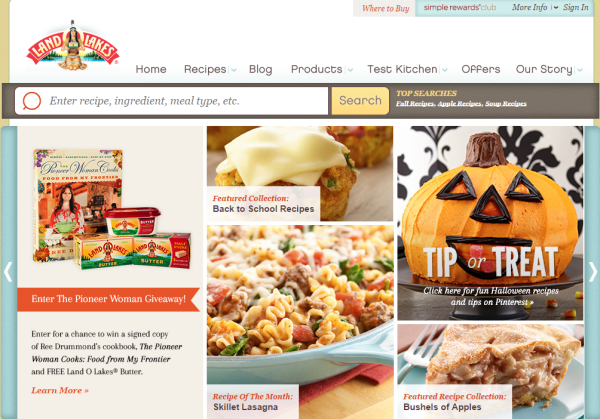
The focus on the traditional family gets created through the choice of displayed images on the site, as well as via blogposts by joung, married women with children. A rather sterile product such as butter, milk or cheese gets provided with the desired emotional potential through both (subliminal) storytelling and (culinary) content marketing techniques. As a consequence, the company’s product gets branded as “family friendly” and appeals specifically to an American market.
Example 4: Corporate image boosting via storytelling
The US organic food supermarket chain Whole Foods stresses – both visually and verbally – aspects such as healthy eating, organic farming and fair trade (which they cleverly call “whole trade”) through several storytelling techniques on their website, eventually resulting in an image boost for the company as a whole.
By largely relying on green and warm colors, fonts imitating actual handwriting and the constant display of fruits and vegetables, the website’s design clearly implies an indirect storytelling strategy that caters to the idea of an organic lifestyle, which the company promises to make accessible via their products.
In addition, the company blog features seasonal recipes, as well as informative articles on the benefits of “eating organic dairy”, or “the dangers of pesticide residues in conventional crops”. With articles such as these, Whole Foods incorporates more obvious versions of narratives and actively utilizes them to boost the image of an environmentally conscious company that cares both for their customers and farmers/suppliers.
The growing organic food commuity needs these kind of stories and guidances, since it represents a relatively new movement and still finds itself in a state of development. As a consequence, stories that convey the image of a wholesome lifestyle, an educated approach to food and nutrition and a high stress on sustainability work extremely well for companies like Whole Foods. The (potential) customer gets inspiration for what and how to cook, why “going organic” provides advantages for one’s personal health, and so on.
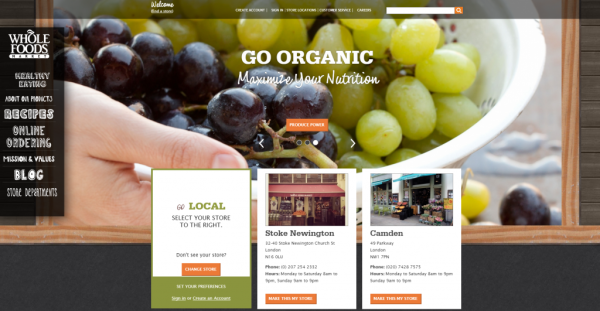
Storytelling, as implemented by Whole Foods, might appear as largely emotionalizing at first glance. Strictly speaking, this is true, and it is actually interconnected with the previous example of Land O’Lakes and their enticing images featuring happy families.
However, Whole Foods takes this approach one step further and actually manages to idealize themselves as an ecologically conscious company through the constant (both obvious and subliminal) storytelling featuring organic farming, organic food, helathy living. etc. Emotions might still be important here, but it is in fact the entire ideology behind a healthy lifestyle that is being instrumentalized by the company in order to boost their corporate image.
Visitors are intriguied by the appealing design and pictures which tell a story of a more conscious, better, healthier (?) self. Ultimately, Whole Foods is not only succesfull with this combination of storytelling and content marketing, but is actually growing and expanding as a business on the whole.
Conclusion: Why Storytelling Should Be Part of Your Content Marketing
If you look at the four different storytelling examples, it becomes quite clear that narratives in content marketing are not simply a nice gimmick or a short-termed phenomenon, but actually fulfill an important task of making content more approachable, more realatable, and eventually more effective.
By getting infused with one or several storytelling techniques, “branded content” becomes interesting, authentic, emotional and last but not least more valuable; both to the brand and the customer. Implementing narrative motifs takes time and expertise, and the audience appreciates this extra step.
The four examples, respectively the featured websites, have illustrated how successful storytelling works and how it is used by companies in different branches and for different reasons. In order to summarize the key facts of how content marketing can benefit from storytelling, have a look at the handy list below.
key facts why storytelling should be a part of your content marketing:
- strengthened identification with a brand/the creation of “shared identity”
- success stories (including a classic happy end) get closely tied to a product/brand
- content marketing is being infused with emotions
- with the help of storytelling, active image boosting becomes less intrusive
It is no coincidence, that storytelling has (almost) become a must have in an e-commerce business these days. It is particularly effective because it creates an attachment to either a product or a company in those areas, that are usually hard to reach with traditional content marketing, i.e. subconscious and emotional areas of the human psyche. With the help of interesting narratives, these areas are being triggered precisely because narratives form such an instrinsic part of our human culture.
Since Youtube bloggers are on the rise and are possibly soon to become the new storytellers of the 21st century, they will gradually transform some of the marketing techniques that we have come to accept and work with.
For instance, authoritative marketing strategies in which the company tells the costumer why he/she should buy their product will eventually be replaced by real “peers” on youtube, raving about a certain brand, while simultaneously going on about their day, school, work, etc.
The lines between storytelling and marketing will eventually start to blur and youtube bloggers with extremely high numbers of subscribers will in fact become the new faces of brands and companies.
In any case, storytelling as a content marketing technique will become more and more important and, in fact, already represents more than a current hype. Only the months and years to come will reveal where this mixture of stories and marketing will eventually lead us in online marketing.
Learn Here How to Use Storytelling to Boost Your SEO!
Business Articles | Business 2 Community
(609)
Report Post
